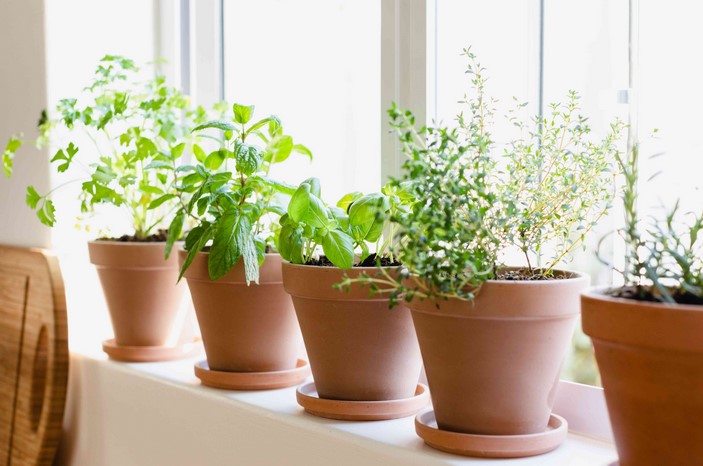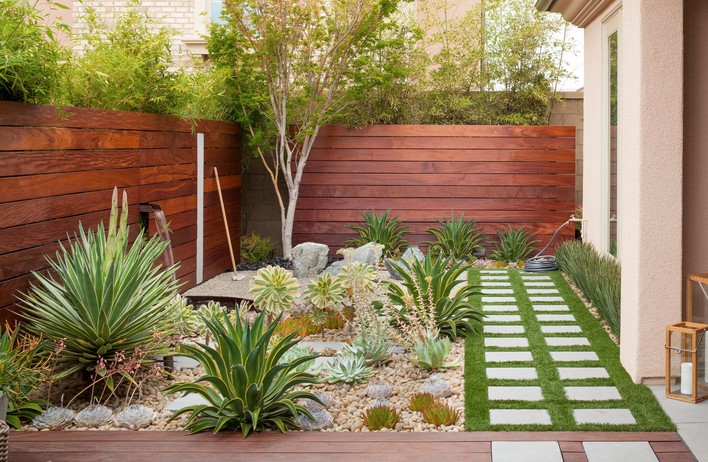
In an age where sustainability and fresh, organic food are top priorities, indoor herb gardens have become a popular choice for many homeowners. Whether you live in an apartment or a house, growing your own herbs indoors offers a convenient way to add fresh flavors to your meals, without having to make regular trips to the grocery store. Indoor herb gardens are not only practical but also aesthetically pleasing, and they can be enjoyed year-round, regardless of the season. This article will explore how you can start your own indoor herb garden, the benefits it provides, and the best herbs to grow in the comfort of your home.
Why Start an Indoor Herb Garden?
Growing herbs indoors provides several advantages that make it an appealing option for home gardeners. Whether you are a beginner or an experienced gardener, indoor herb gardens offer a range of benefits:
1. Year-Round Freshness
One of the most obvious advantages of an indoor herb garden is the ability to enjoy fresh herbs all year long. Unlike outdoor gardens that are subject to the weather, indoor gardens allow you to grow herbs regardless of the season. Even during the cold winter months when your outdoor garden is dormant, your indoor herb garden will continue to thrive.
2. Convenience and Accessibility
Having fresh herbs right in your kitchen or living room is incredibly convenient. No more rushing to the store for a handful of basil or rosemary—you can simply snip what you need from your indoor garden. This accessibility encourages home cooking and the incorporation of fresh herbs into daily meals, improving the flavor and nutritional value of your food.
3. Space Efficiency
Indoor herb gardens don’t require a large outdoor space, making them perfect for small apartments or homes. You can grow herbs in containers, windowsills, or even on a small balcony. Additionally, these gardens can be set up with minimal tools and equipment, making it easy to maintain.
4. Environmental Impact
By growing your own herbs indoors, you contribute to reducing your carbon footprint. No more buying pre-packaged herbs from the store that come in plastic containers. You also reduce the need for transportation and packaging waste associated with store-bought herbs. Plus, many herbs can be grown organically without the use of pesticides or chemicals, allowing you to enjoy truly fresh and healthy food.
How to Create Your Own Indoor Herb Garden
Setting up your own indoor herb garden is a simple and rewarding process. Whether you’re growing a small collection of plants on your windowsill or a larger setup in your kitchen, the following steps will help you get started.
1. Choose the Right Location
Selecting the right location for your indoor herb garden is essential for its success. Most herbs need at least 4-6 hours of sunlight each day. A south-facing windowsill is often the best option since it gets the most direct light throughout the day. However, if you don’t have access to natural sunlight, you can use grow lights to supplement.
Look for a spot that is both sunny and convenient for regular harvesting. Kitchen windowsills or countertops near windows are excellent choices, as they allow you to have easy access to your herbs while cooking.
2. Select Your Herbs
When choosing which herbs to grow, it’s essential to consider which ones are well-suited for indoor environments. Some herbs are more forgiving and easier to grow than others, making them ideal for beginners. Here are a few great options for indoor herb gardens:
- Basil: One of the most popular herbs, basil thrives in sunny locations. It’s great for cooking Italian dishes, and it can be grown easily in pots or containers.
- Mint: Mint is a hardy herb that grows quickly. It’s perfect for adding to drinks or desserts. Keep in mind that mint can spread aggressively, so it’s best to grow it in a container to contain its growth.
- Rosemary: Rosemary is another excellent herb for indoor gardening. It needs a lot of light and well-draining soil, making it ideal for a sunny windowsill.
- Thyme: This herb is perfect for small indoor gardens, as it doesn’t require much space. Thyme is also a low-maintenance herb that thrives in well-drained soil.
- Parsley: Parsley is great for beginners and works well in smaller spaces. It can tolerate some shade, making it an ideal choice for windowsills with indirect light.
- Chives: Chives are easy to grow and require minimal care. They grow well in small containers and don’t need too much sunlight, making them a great option for beginner gardeners.
3. Pick the Right Containers
Selecting the right containers is crucial for the health of your indoor herb garden. Choose containers that have drainage holes to prevent water from pooling at the bottom, which can lead to root rot. Plastic, ceramic, or terracotta pots are all good options for herbs.
For those with limited space, consider using stackable containers or a vertical garden setup. These allow you to grow several herbs in a small area while keeping them organized and easy to care for.
4. Soil and Watering
Herbs need well-drained, nutrient-rich soil to thrive. A good-quality potting mix designed for indoor plants works well. Avoid using garden soil, as it can be too heavy and may contain pests or diseases.
Water your herbs consistently, but be careful not to overwater. Most herbs prefer to dry out between waterings, so let the soil dry out slightly before adding more water. Be sure to check the moisture level of the soil regularly, and always water from the base of the pot to avoid wetting the leaves, which can lead to fungal diseases.
5. Pruning and Harvesting
Regular pruning and harvesting are key to maintaining healthy, productive indoor herb gardens. Trim the tops of your plants regularly to encourage new growth and prevent them from becoming leggy. Harvest your herbs by cutting the leaves or stems as needed, but be sure to leave enough of the plant behind to keep it growing.
It’s also important to remove any dead or yellowing leaves to prevent disease and allow the plant to focus its energy on new growth. By regularly harvesting and maintaining your herbs, you’ll encourage fresh growth and keep your plants healthy year-round.
Indoor herb gardens are an excellent way to grow fresh, flavorful herbs right in the comfort of your home. By choosing the right location, selecting suitable herbs, and maintaining proper care, you can enjoy a steady supply of fresh herbs for cooking, teas, and more, regardless of the season. Not only do these gardens add a touch of greenery and beauty to your indoor space, but they also contribute to sustainability and healthy eating. Whether you’re an experienced gardener or a complete beginner, creating an indoor herb garden is a rewarding and practical project that will enhance your home and your meals.


